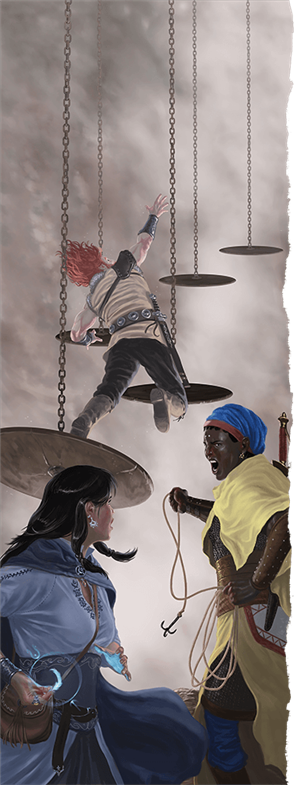 Early in the design process that led to the fifth edition D&D rules, the game’s designers talked frequently about the “three pillars” of D&D: combat, exploration, and roleplaying/social interaction. These discussions were both a clear message to acknowledge their design parameters, and well a reassuring nod to the players that the designers knew what made the game tick.
Early in the design process that led to the fifth edition D&D rules, the game’s designers talked frequently about the “three pillars” of D&D: combat, exploration, and roleplaying/social interaction. These discussions were both a clear message to acknowledge their design parameters, and well a reassuring nod to the players that the designers knew what made the game tick.
I reviewed and digested this information as the D&D Next designers and developers released it, then I ran it through the filters of my own experiences as a designer, player, and DM. Many questions came to mind. What did “combat” mean in terms of the rules, but more importantly, in terms of how the concept of combat in D&D is handled at the countless game tables around the world? What exactly was “exploration,” what was fun and interesting about that concept in the game, and how might a focus on exploration detract from the game in certain situations? What exactly does “roleplaying” mean to the diverse player base, and was there an antithetical relationship between the concepts of “combat” and “social interaction?”
As I pondered all of this, I was fortunate enough to continue performing freelance tasks for Wizards. The new edition was announced not long after I turned in my work on the final fourth edition hardcover adventure, Halls of Undermountain. Even as I was working on that adventure, I was seeing a focus on bringing the three pillars into not just an adventure, but into each encounter as well. I worked on two consecutive D&D Encounters seasons—War of Everlasting Darkness and Against the Cult of Chaos—where we saw a shift from the fourth edition rules into the playtest ruleset of D&D Next. I contributed a small amount to the D&D Next adventure Ghosts of Dragonspear Castle, which full utilized the playtest ruleset. With each new design project along the D&D Next timeline, one overarching query grew louder and louder in my head: how can I bring combat, exploration, and roleplaying not just to an adventure, but to each encounter as well, in a fun and meaningful way?
The One-Hour Challenge
My first design project using the newly released fifth edition ruleset was Defiance in Phlan, the initial Expedition adventure for the D&D Adventurers League campaign. All my ruminations on putting the three pillars of D&D into an encounter would be put to the test… big time. My instructions for this adventure were interesting and terrifying as a designer. The adventure parameters called for the design of five one-hour mini-missions. Since they were going to be run at conventions to introduce the game to new players, each mini-mission had to be playable in exactly one hour to keep convention lines moving and the schedule from getting backed up. And more importantly, each mini-mission was supposed to show at least two of the pillars in action—and all three if possible. If I wasn’t sure how to get all three pillars into an encounter, and do it in a way that players and DMs enjoyed, I’d have to learn quickly.
I’ve written extensively on what I learned about adventure and encounter design through that experience, as well as through the four similar adventures that I wrote to start the four subsequent Adventurers League seasons. I have to admit that some of those encounters were better than others, and some I’d redesign if I could. In the totality, though, I feel like the feedback I’ve received from the DMs and players who took part in those adventures has taught me a great deal about not just the grand theories of adventure design, but the actual-play experiences of a wide variety of DM and player types.
One Pillar, Two Pillar, Three Pillar, More
So now let’s dive headfirst into the deep waters of encounter design, looking at them through the prism of these wonderful D&D pillars: combat, exploration, and roleplaying. First, let me say this: you can absolutely design great encounters without thinking about the pillars so deliberately. People were doing so for years, and they will continue to do so for as long as Bahamut sits on his throne on Mount Celestia. Using this process of pillar acknowledgement, however, can help focus concepts and even allow for new ideas to creep into our design.
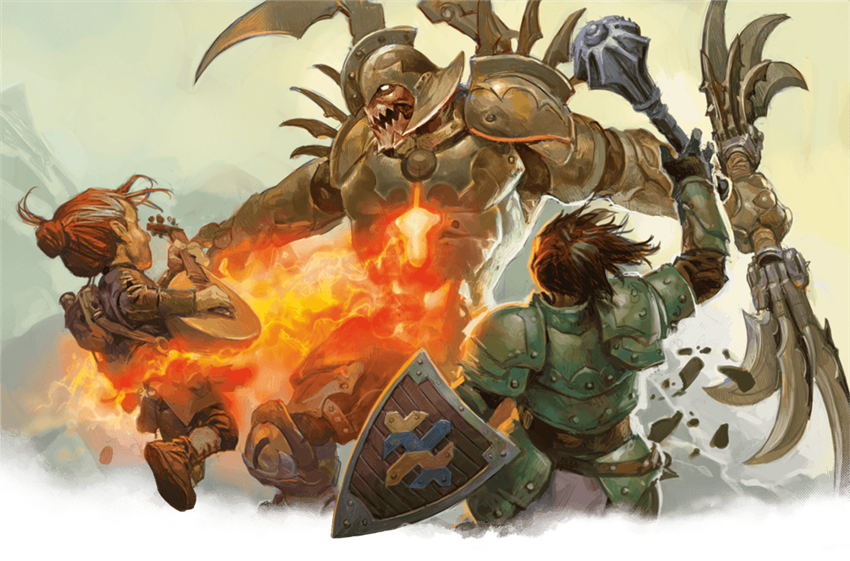
Combat
As few as four years ago, I would’ve said that when a new player comes into the D&D hobby, combat is the most likely way they interact with the game, and the most substantial part of their early experiences. For years and years, over many editions, combat was the most prolific kind of encounter in the game. It was what many DMs felt the most comfortable running at the table. Most of the game focuses on rules that are used in combat. The dice, which people rightfully love to roll, most often adjudicate success and failure in combat.
The proliferation of live-play podcasts and streams may have, however, brought more people into the game through the vehicle of roleplaying and social interaction. If a four-hour stream of a game contains only 2 short combats and practically no exploration, that means players who’ve come to the game through watching D&D are more intimately familiar with the joys and challenges of the roleplaying/interaction part of the game.
That said, the pillar of combat in D&D is obviously vital to the game, and we have to know what we’re doing when designing combat encounters. The combats are the life-and-death struggles of the characters. In most combat encounters, the goal is going to be to defeat the enemies; if the characters fail at that, they tend to be unable to achieve their encounter goals.
That, however, needn’t always be the case. Unique and interesting alternatives exist to the standard “kill everything and take their stuff” combat encounter. By getting creative with three of the encounter elements we discussed in the last article—goals, threats, and choices—we can imagine a variety of different combat encounters.
First, let’s look at changing the goals of a combat. Typically, as mentioned earlier, the goal is to kill the monsters. To present a new experience to the players, change the goal. For example, make the goal of the encounter incapacitating the enemies instead. This forces the players to vary their tactics and plan carefully. Another fun wrinkle to add to the combat is to make some action within the encounter—such as deactivating a ticking bomb—the ultimate goal. Moving from one place in the encounter area to another as quickly as possible is also a great combat encounter, such as getting from the entrance to an exit. Having all the enemies in the encounter ignoring the characters and attempting goals of their own, which the characters must attempt to stop, can be fun and disconcerting for the characters.
One caveat: if we design a combat encounter in these different and unique ways, we must take steps to make sure that killing all the enemies is not the optimal solution to achieve the goal. Let’s take the example of the characters needing to diffuse the bomb before it goes off. When we design this encounter, if the characters can simply slay the monsters first, and then deal with the bomb separately, it lessens the tension and drama of the encounter. Instead, we must design parameters into the encounter that forces the characters to weigh their actions more carefully. Give only a couple of rounds for the characters to diffuse the bomb, or provide a means to delay the bomb without actually having it detonate. This takes the typical “defeat the monsters first” strategy off the table, encouraging new solutions.
With any alteration to the typical combat encounter flow, it is important to make sure the characters know, or have an easy way to learn, the ultimate goal of the encounter before it is too late. It’s unfair to punish the characters for failing at an encounter goal that they had no way of understanding was the goal. If you don’t tell the players that the bomb is ticking, or give the characters a way to see how much time is left on the bomb, then you’re hiding the important information the characters need.
In a later article we’ll look at combining combat with the other two pillars to create interesting and diverse encounters. But next, let’s talk about exploration encounters.
Exploration
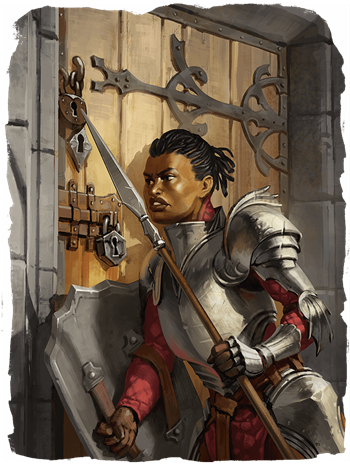 For me, exploration has always been the most difficult part of adventure design: the hardest pillar to make fun, dramatic, and engaging as part of a game and as part of an ongoing narrative. One strategy that’s helped me is to consider exploration in terms of discrete encounters, with their own goals, threats, complications, and potential outcomes, rather than think of them only as an amalgam of stuff that happens as the characters move from one encounter to the next.
For me, exploration has always been the most difficult part of adventure design: the hardest pillar to make fun, dramatic, and engaging as part of a game and as part of an ongoing narrative. One strategy that’s helped me is to consider exploration in terms of discrete encounters, with their own goals, threats, complications, and potential outcomes, rather than think of them only as an amalgam of stuff that happens as the characters move from one encounter to the next.
Before we talk about exploration, however, we need to frankly discuss the place of this pillar in D&D. In many cases, you have to work hard to make combat and roleplaying unfun. Exploration, when not managed carefully, can easily become repetitious, undramatic, and terribly boring. If you play a character (or are a DM of players) who loves meticulously searching every five-foot square as they move through a dungeon, 10-foot pole at the ready, as you lovingly draw the dragon’s lair on graph paper, excellent for you! But you are in the minority.
Therefore, we have to recognize, as designers of encounters, what players (and the DMs who run our adventures) want to do as they play our adventures. So what can be dramatic and fun and challenging and story-important about exploration?
To answer that, first consider that concept of exploration in the real world. Explorers brave the unknown, overcoming dangers and updating their plans based on the new information, which they must not simply uncover, but must interpret and use wisely as well. When examined in this light, exploration isn’t that much different than combat, except the threats and challenges look a little different, although not necessarily less hazardous to the overall mission.
When I plan exploration encounters, I think of fiendish traps and strange magical idols, rapidly moving rivers and fearsome lava flows, rooms that fill with water or waves of mind-shredding psychic wails. For me, traversing the unoccupied roads of the Placid Forest on the way to the castle isn’t an encounter, unless the Placid Forest holds the carnivorous Treants of Doom!
So if an encounter needs threats, as well as consequences for success of failure at dealing with those threats, what are we talking about here? Let’s start with what I’m not talking about: bringing an adventure to a halt if the PCs fail. One of the simplest exploration encounters is the locked door. If the only threat that the door poses is keeping the PCs from getting to the rest of the adventure, that is not a good threat and definitely is a problematic encounter.
Using the locked door as an example, with no other cool elements to it, what can we do to at least make it an encounter worth having. The lock on the door can be picked or a knock spell cast to open it quietly. Or it can be smashed down with weapons after a few rounds of noisy hacking. At the simplest level, we have the threat (can’t get where we want to go without getting through the door) and consequences for success (continue unnoticed) or partial success with a small consequence (the creatures in the next combat encounters have the chance to hide and surprise the PCs).
Using this very simple encounter as a guide, you can imagine many permutations of an exploration encounter. A door in a dungeon can become instead a magical clearing in a forest, and the threat and consequences can be as simple or complex as you want to make them. It’s just a matter of providing the goal, the threat, the choices, and the consequences. Whether you’re dealing with a physical obstacle, a devious trap, and supernatural hazard, or a dangerous trip, always keep all of the elements of an encounter in mind, and be willing to play with them.
Roleplaying/Social Interaction
Roleplaying has long been considered the frosting on the wonderful cake that is a tabletop roleplaying game—the thing that differentiates D&D and other RPGs from board games. The wonders of taking on a new persona, giving that character its own background and goals, not to mention flaws and quirks, speaks to a multitude of D&D players.
An issue that not just D&D, but any social RPG, has with roleplaying is that often the roleplaying aspect of the game can seem disconnected from the rest of the rules. There’s the rolling dice and the fighting monsters, and then the dice are put down and the “talkie parts” happen. The players that love the tension and strategy of combat and exploration might be tempted to tune out, and the people who want to chew up the proverbial scenery with their acting chops (or lack thereof) roleplay with abandon, often without any consideration of what it might mean to the narrative of the game in progress.
Sometimes the separation of combat/exploration and roleplaying gets so distinct that players are upset when roleplaying choices or the social aspects of the game have any sort of profound impact on the game. The cries of “you can’t kill my character without rolling dice” ring far and wide—as if, in the stories of our world (and in reality), characters don’t ever get defeated because of their choices or their social blunders. If you want the narrative and the entire game to have meaning, pay special attention to your roleplaying encounters.
As with combat and exploration, focusing on the elements that make an encounter can assist us in creating memorable and vital social encounters. Again, let’s think of those encounter elements that we need to make a fully formed and relevant encounter: information, goals, threats, choices, and then the consequences and outcomes. Just as all of this holds true for combats and exploration, so it does for roleplaying encounters. Granted, with social encounters the play might require a little more finesse, but it fits the mold nonetheless.
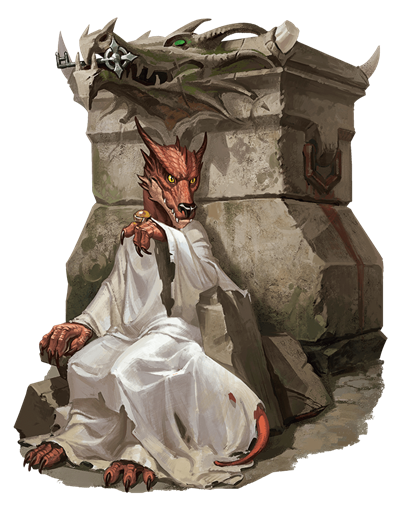 Here’s an example: a merchant at the local city market saw a murder, but they’re too scared to admit it, and the characters need the information they possess. Going into the encounter, the characters know it is one of four merchants with stands at the market. This covers the known information element of the encounter. The opposition and threat in the encounter are the fear of the witness, who knows that if she admits to what she saw, the assassins’ guild will target her and her family. The opposition and threat could also be that the characters cannot make public their involvement, or the guild will target them as well.
Here’s an example: a merchant at the local city market saw a murder, but they’re too scared to admit it, and the characters need the information they possess. Going into the encounter, the characters know it is one of four merchants with stands at the market. This covers the known information element of the encounter. The opposition and threat in the encounter are the fear of the witness, who knows that if she admits to what she saw, the assassins’ guild will target her and her family. The opposition and threat could also be that the characters cannot make public their involvement, or the guild will target them as well.
As the writer of the adventure, we need to provide not only the challenge, but also the means by which the characters can solve the challenge. This means providing motivations for the NPCs, along with how they might react to particular character tactics. And not just that! We also need to provide clues to tell the characters which tactics work or which don’t work for each NPC. This combines the known information at the start of the encounter with the learned information as the encounter plays out. Using key phrases and ability checks—particularly of the Charisma, Intelligence, and Wisdom varieties—we can make a “social map” of the encounter that has just as many pits, traps, doorways, and passages as a dungeon map.
As we go about this, we must also remember not to put a proverbial locked door on a social encounter. The characters should still be able to continue the adventure even if they fail horribly in the encounter. That does not mean, however, that we have to make it easy. Arrest by the authorities, incorrect information, a heightening of the challenge in later encounters, a draining of important resources: all of these could be outcomes of a failed social encounter, and the encounters that follow might be even more interesting because of it.
Next Time
In the next article, we’ll look at how encounters can be created using multiple pillars at once, and how those encounters are some of the most memorable in the game. We’ll also look at how to start piecing encounters together, and we’ll actually create an encounter or two for our adventure!
Create A Brand-New Adventurer Acquire New Powers and Adventures Browse All Your D&D Content
 Shawn Merwin's professional design, development, and editing work in D&D has spanned 20 years and over 4 million words of content, ranging from third to fifth edition. His most recent credits include the Acquisitions Incorporated book, Baldur’s Gate: Descent into Avernus, and Storm Lord’s Wrath. He is also the Resource Manager for the D&D Adventurers League’s Eberron: Oracle of War campaign. Shawn hosts a weekly D&D podcast called Down with D&D, and he holds an MFA in Creative Writing from Vermont College of Fine Arts. You can follow his ramblings and musing on Twitter at @shawnmerwin.
Shawn Merwin's professional design, development, and editing work in D&D has spanned 20 years and over 4 million words of content, ranging from third to fifth edition. His most recent credits include the Acquisitions Incorporated book, Baldur’s Gate: Descent into Avernus, and Storm Lord’s Wrath. He is also the Resource Manager for the D&D Adventurers League’s Eberron: Oracle of War campaign. Shawn hosts a weekly D&D podcast called Down with D&D, and he holds an MFA in Creative Writing from Vermont College of Fine Arts. You can follow his ramblings and musing on Twitter at @shawnmerwin.
Want to read more of this series? Click on the "Let's Design an Adventure!" tag below to see the full series.








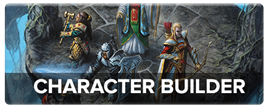
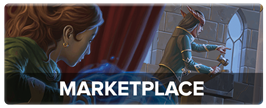
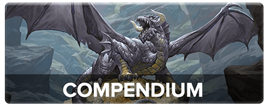
-
View User Profile
-
Send Message
Posted Jan 8, 2020Thanks for posting this! I'm going to show it to a friend of mine who is going to have to design a few adventures in a month or so, as a primer.
-
View User Profile
-
Send Message
Posted Jan 8, 2020Now this is good stuff! This is the content an aspiring DM needs to build their own world that will not bore their players.
-
View User Profile
-
Send Message
Posted Jan 8, 2020Oh, good! We’re back at it. It’s been far too long since the last article!
-
View User Profile
-
Send Message
Posted Jan 8, 2020This is a great read. Thank you for your clear and concise breakdowns. Coupled with the suggestions and guidance provided, this is very useful.
-
View User Profile
-
Send Message
Posted Jan 8, 2020Great article, and just what I needed to help flesh out what would’ve been a mundane trek to the actual adventure site. I have always tried to keep the three pillars in mind for each game session, but never thought to break it down into encounters !
-
View User Profile
-
Send Message
Posted Jan 8, 2020Thanks for the informative post! I always struggled with creating exciting role play and exploration moments
-
View User Profile
-
Send Message
Posted Jan 8, 2020Hi Shawn, this is really excellent material. Perhaps in your next installment, you could refer to a couple of encounters you wrote in those season openers for AL? It would be great to see how it works in practice.
-
View User Profile
-
Send Message
Posted Jan 8, 2020"The lock on the door can be picked or a knock spell cast to open it quietly."
Uh Knock is not a quite spell at all. "a loud knock, audible from as far away as 300 feet, emanates from the target object."
Other than that I loved the article.
-
View User Profile
-
Send Message
Posted Jan 8, 2020Good article, and quite helpful too.
-
View User Profile
-
Send Message
Posted Jan 8, 2020This series, and this article in particular, is amazing! Probably my favorite series of articles here, and that's including Encounter of the Week! Great job Shawn, please keep it up!
-
View User Profile
-
Send Message
Posted Jan 8, 2020Excellent article! Even with decades in the DM's seat I find I still can use help sometimes setting the right parameters to make each element of the game sing. For me it is social encounters which sometimes lack for the clear definition of appropriate information, threats and consequences up front so that I know as the encounter proceeds how to keep it engaging to the players and important to the story. I'm looking forward to reading more installments.
-
View User Profile
-
Send Message
Posted Jan 9, 2020The other mage casts silence on it first.
-
View User Profile
-
Send Message
Posted Jan 9, 2020Great article! ...Though reading the Exploration segment, it reads sort of like the way to make Exploration work as a pillar is to involve either combat or roleplaying/social interaction in it...
-
View User Profile
-
Send Message
Posted Jan 9, 2020As always. A fantastic article. I kept thinking of ways to make exploration a key and interesting element,
-
View User Profile
-
Send Message
Posted Jan 9, 2020I know that I, for one, am glad that D&D Beyond is releasing actual content for the first time in a while. Anyone else? Anyways, I really enjoyed the article and hope this trend continues.
-
View User Profile
-
Send Message
Posted Jan 9, 2020We took a holiday break to rest and regroup, and we're back strong in the new year. I hope you enjoy the new articles we have for you this year!
-
View User Profile
-
Send Message
Posted Jan 9, 2020Hi Shawn,
This article is absolutely terrific, and I think a lot of DMs will be helped by it. I'm currently running the Phlan-arc of Tyranny of Dragons and whereas I enjoyed the adventures, there were a *lot* of open quest lines. I've designed an "in-between" adventure right before DDEX1-4 where Rillo Leadstopper is kidnapped by the guard sergeant who was absent from the secret prison at the time. The sergeant, a Goliath veteran, is hoping to tie up some loose ends before he flees Phlan.
To tie it all together, the sergeant wasn't at the prison because he was serving a shift at Sokol Keep at the time of DDEX1-1. After returning, and finding the prison in rubble (my players destroyed it), he went on a rampage and was fired from duty. This individual was generally disliked in Phlan and now has to flee or likely be killed in the streets. He has amassed a hoard of gold from extorting the citizens of Phlan, and has made an agreement with a separatist faction within the Welcomers who was working with the Cult of the Dragon, who were encountered in the abandoned warehouse of DDEX1-1, trying to buy the dragon egg. They were imprisoned for racketeering (couldn't prove anything beyond that point), but have since been released.
The sergeant has resolved to tie up the loose ends before leaving Phlan forever, exacting his revenge on those who brought this on him. He has kidnapped Rillo to find out where Villonah is hiding, and plans to have her snatched as well before getting out of Phlan altogether.
I found this a fun conclusion to what seems to be the first arc of Phlan, where the players become familiar with the power structure and the various factions before they're sent outside of the city for most of the other missions. It encompasses the three pillars where the players have to investigate (rp and exploration) with various NPC's of my creation in new locales such as Podol Plaza and the residential district of Phlan, before confronting the disgraced sergeant in what remains of the prison.
I'd like to hear your thoughts on this as I feel it's pretty well thought out, but there's always room for improvement ^__^
-
View User Profile
-
Send Message
Posted Jan 9, 2020Oh here's the real article.
This was really good, showed a lot about how you should think about encounter design and I'm really glad it mentioned how we should attempt to bring up more of the other pillars of the game as much as combat. Roleplaying definitely feels underutilized in most games I've been in.
Thanks for the good work
-
View User Profile
-
Send Message
Posted Jan 9, 2020Hey Shawn. The work you are doing for us Dungeon Masters is awesome. I cannot tell in words how much you are helping me in my personal game. It is amazing that you share your experience and advice with us. Thank you for this amazing series.
-
View User Profile
-
Send Message
Posted Jan 9, 2020Another great article. One thing I struggle with the exploration/social pillar is those of us who have grown up since 1e when basically everything not in a dungeon was hand waved is getting players to actually explore the area they're in. Often times I end up prompting them: "What are you searching, there's a bed, a rug and a dresser in the room." which is basically making it video game like, where you know these clickable objects must have something I need for quest in them. What is a good way to be less obvious about it, yet still not have to worry about the players missing a vital piece of information?